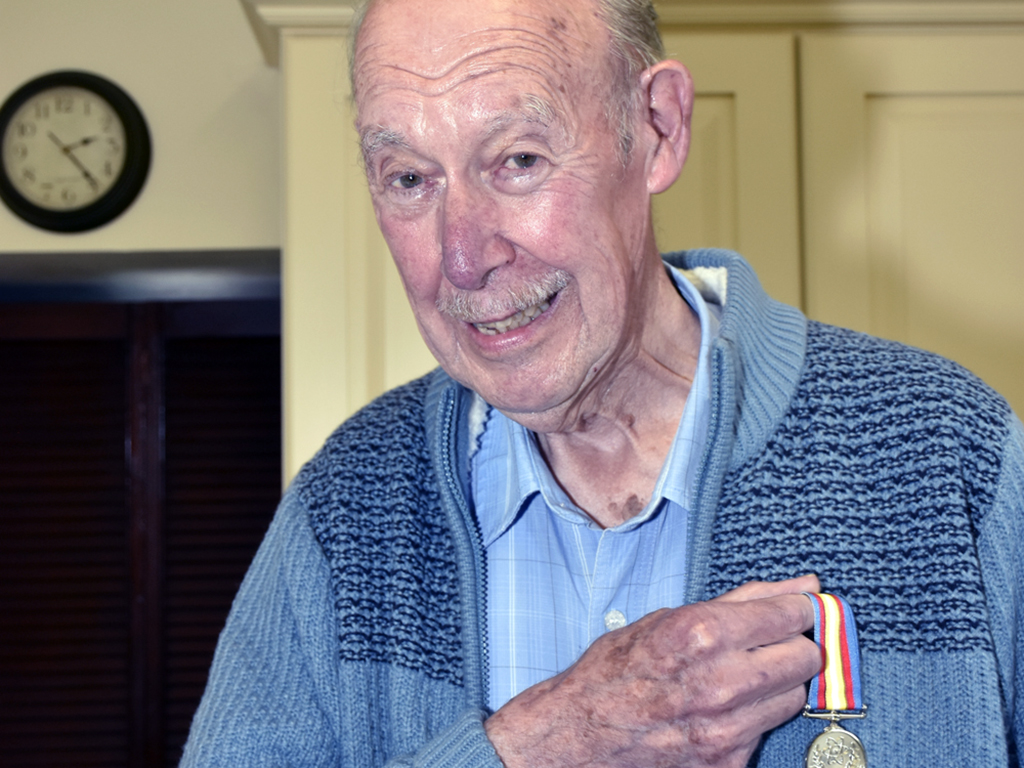
by Terry Bearpark
A Patrington man has had his military service on a remote island in the Pacific Ocean recognised with the award of a new medal.
Jeffrey Robinson, now aged 86, was called up for national service in 1958, and because of his work as an apprentice in heavy engineering in his home town of Darlington he became a sapper in the Royal Engineers.
He was posted to Christmas Island in 1959, which was named by explorer Captain James Cook who discovered and mapped it on Christmas Eve in 1777. The island, among others, was the site of Operation Grapple, four series of British tests of atomic and hydrogen bombs carried out in 1957 and 1958 at Malden Island and Kiritimati – Christmas Island – in the Pacific as part of the British nuclear bomb programme.
Jeff spent a year on the island, without any leave, working on engineering projects and maintenance. The work was hard in the hot and humid weather, “but the food was not too bad”.
Returning to civilian life he became an inspector on the pipelines that were starting to bring gas ashore from the North Sea. This involved travelling in the Netherlands and around England and it was while working from Easington in 1966 that he met his wife and married into an old Patrington family.
Always interested in local history he is the author of two books about the Patrington area, In Search of the “George and Dragon” and the Lost Inns of Patrington and in Search of Bygone Patrington: A Miscellany.
And now Mr Robinson is the proud possessor of the Nuclear Test Medal, which was announced by the Prime Minister last November, 70 years after the first British test of a nuclear weapon, and recognises military, civilian and overseas staff and personnel who participated in Britain’s nuclear testing programme in the 1950s and 1960s.
Since the announcement, the Government has worked hard to ensure that a fitting medal was designed, minted and issued to as many veterans as possible in time for this year’s Remembrance events.
The medal features a crowned likeness of King Charles with the inscription ‘CHARLES III DEI GRATIA REX FID DEF’ on the obverse, while the reverse shows an atom design surrounded by olive branches, with the words ‘NUCLEAR TEST MEDAL’ beneath.
The ribbon has a central white stripe, with symmetrical stripes of yellow, black and red, and sky blue stripes on the out edge – the blue is intended to represent the sky and the sea in the Pacific, where the UK’s nuclear tests took place.




